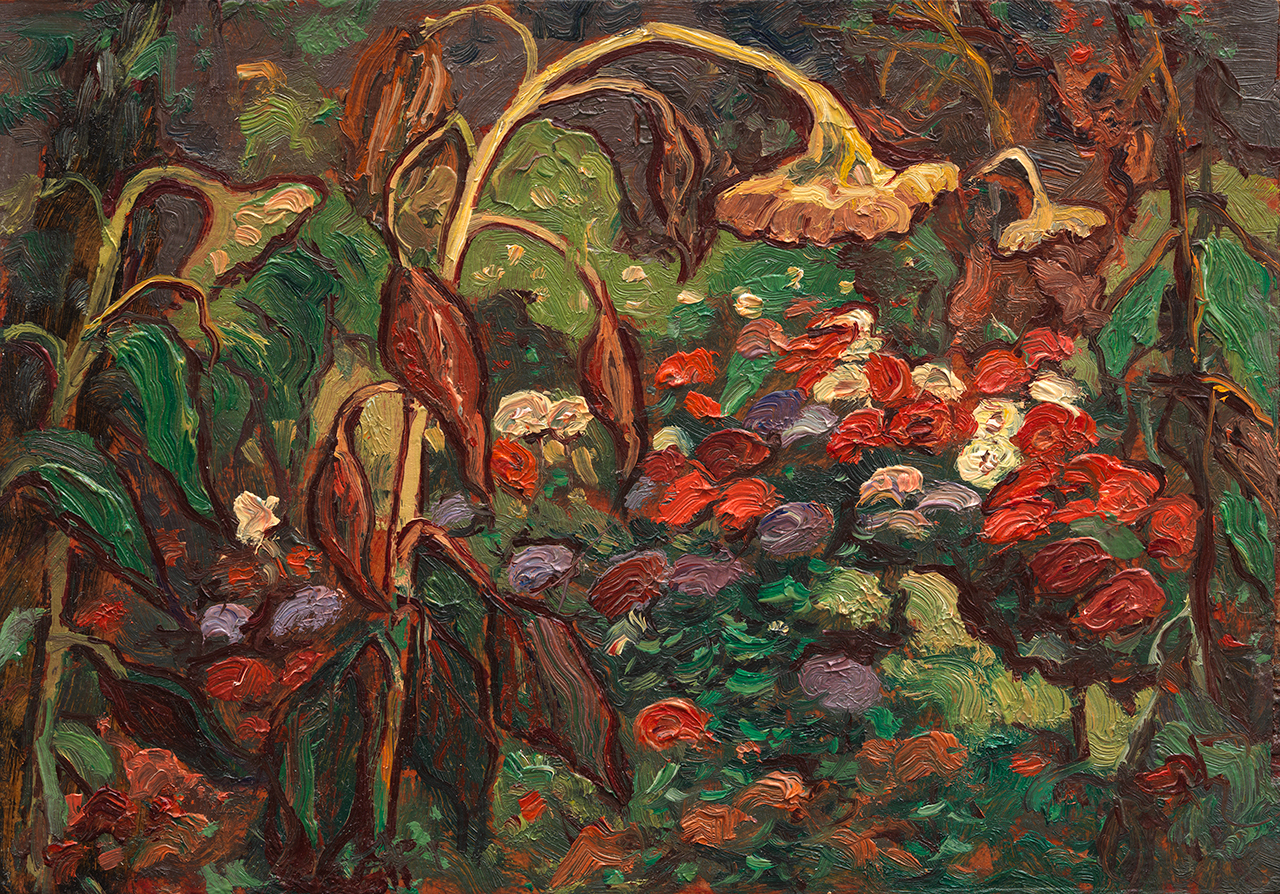
In January 2015, the Vancouver Art Gallery was gifted 10 painted sketches by James Edward Hervey MacDonald, a modern landscape artist and founding member of the renowned Group of Seven. Supposed studies for larger paintings, the works were deemed long lost and forgotten, with the museum’s curator Ian Thom hailing their rediscovery at that time as lending “considerable insight into the transformation of [the artist’s] style.”
Eight years on, the pieces have gone on view at the museum, but with one significant caveat—they’re no longer attributed to MacDonald.
“J.E.H. MacDonald? A Tangled Garden” brings together the 10 paintings alongside the detailed findings that led the institution to reattribute them. It’s an effort, said Anthony Kiendl, CEO and executive director of the Vancouver Art Gallery, to unpack a “fascinating story” that has seen the undoing of a high-profile gift.
Unknown artist, Sketch after Falls, Montreal River. Collection of the Vancouver Art Gallery.
The paperboard sketches were a gift from Ephry and Melvin Merkur, who had inherited them from their father Max Merkur, a Toronto-based art collector. According to the museum, the works were buried by MacDonald and his son Thoreau in the backyard of the family’s property for safekeeping in 1931. These boxes were then excavated in 1974, whereupon they were snapped up by Merkur.
But in the wake of the donation, questions were raised, most prominently by the Globe and Mail, about the authenticity of the works. Among their doubts, experts pointed out the anachronistic paint types used in the works and more egregiously, misspellings in the artist’s signature. The cloud surrounding the paintings led the museum to shelf a planned exhibition, and recruit art historians, handwriting experts, and the Canadian Conservation Institute (CCI) to untangle the matter.
Unknown artist, Sketch after Leaves in the Brook. Collection of the Vancouver Art Gallery.
The CCI undertook scientific research and visual analysis of the paintings, supported by art history specialists who offered qualitative assessments. Their study found pigments that did not exist in MacDonald’s lifetime, as well as the use of boards that were unlike those the artist typically drew on. A handful of the purported sketches, too, were found to resemble the completed works in such a way that experts suggest they were created after, rather than for, the final compositions.
Based on these findings, the museum is now attributing the 10 pieces to an unknown artist.
“This investigation exemplifies how scientific examination can play an important role in the understanding and preservation of cultural heritage The CCI’s findings were crucial to the conclusive outcome of the investigation, which has led to the revised attribution of these 10 painted sketches,” said Kate Helwig, a conservation scientist at the CCI.
Unknown artist, Sketch after The Wild River. Collection of the Vancouver Art Gallery.
Still, “A Tangled Garden” will feature an installation of oil sketches by J.E.H. MacDonald, as well as those of his Group of Seven peers. Active from 1920 through ’33, the cadre of artists were celebrated for their modern, almost romantic, approach to landscape painting. Defying the staid formalism of 19th-century naturalism, they produced deeply energetic and expressive canvases, exemplified by Tom Thomson’s The West Wind (1916–17), Lawren Harris’s Lake and Mountains (1928), and MacDonald’s Falls, Montreal River (1920).
While the new attribution might be humbling, particularly following the highs of the 2015 rediscovery, the museum sees moving forward with an exhibition of faked works as critical to its mission. Kiendl, for one, touts the project as reflective of “our commitment to research, artistic inquiry, and sharing new knowledge with our communities.”
“The gallery seeks to foster an environment of critical inquiry and transparency,” he added, “in which our audiences participate in the discourse surrounding the meaning of these artworks.”
“J.E.H. MacDonald? A Tangled Garden” is on view at the Vancouver Art Gallery, 750 Hornby St, Vancouver, Canada, through May 12, 2024.
More Trending Stories:
Art Dealers Christina and Emmanuel Di Donna on Their Special Holiday Rituals
Stefanie Heinze Paints Richly Ambiguous Worlds. Collectors Are Obsessed
Inspector Schachter Uncovers Allegations Regarding the Latest Art World Scandal—And It’s a Doozy
Archaeologists Call Foul on the Purported Discovery of a 27,000-Year-Old Pyramid
The Sprawling Legal Dispute Between Yves Bouvier and Dmitry Rybolovlev Is Finally Over